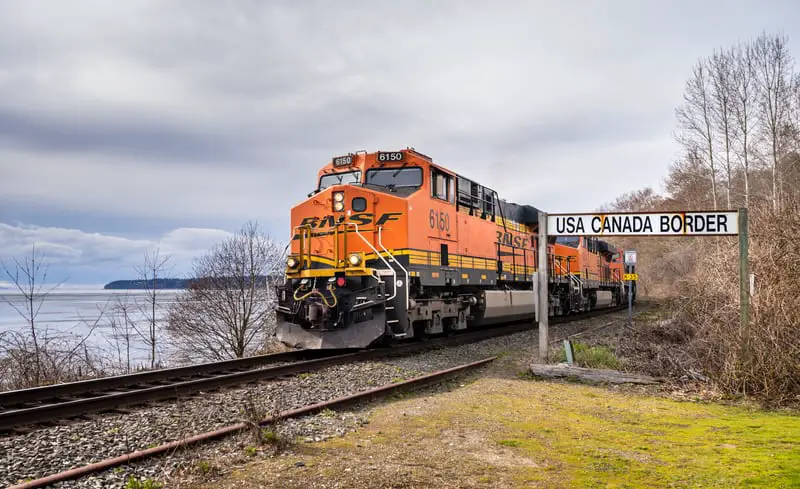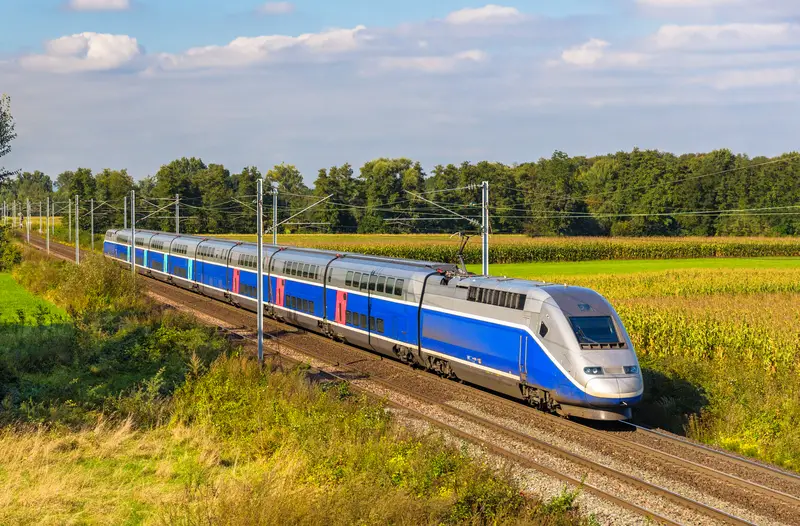
Trains are often used to transport things across the country and travel for hundreds of miles at a time. But can a train cover that distance without needing to be refueled, or how far can they go without refueling?
It’s estimated that a locomotive train that has a 5000-gallon tank can travel for approximately 1000 miles without needing additional fuel. Of course, the fuel needed depends on the train’s weight and the tracks’ steepness. Trains can travel a fair distance between refueling.
Let’s discuss everything you need to know about the fueling needs and costs of locomotive trains.
How Far Can a Train Go On a Tank of Fuel?
When considering how much freight is moved yearly by train, you might wonder how far trains can travel without needing to be refueled.
Scientists are constantly working to improve the fuel efficiency of trains. Still, they can cover a decent amount of land without refueling.
On average, a locomotive train can travel around 1000 miles (1600 km) without needing to be refueled. But, of course, the weight of the load and the steepness of the climb affects how far a train can go without needing fuel.
The heavier the load, the harder the engine must work to move the train, meaning that a heavier load will use more fuel than a lighter one.
What’s more, if the track covers steep climbs and travels to areas at higher altitudes, the train will use more fuel and will not travel as far without needing to be refueled.
The size of the fuel tank and train also affects how far it can go without needing fuel. Generally, a locomotive train with a 5000-gallon fuel tank can travel 1000 miles without being refueled.
This is a significant distance for a freight train to travel and means that they don’t often need to stop for refueling on a trip.
A new type of train that runs on hydrogen instead of fuel can travel around 750 miles without needing to be refueled. For example, the Alstom Coradia iLint passenger train has successfully traveled 1 175 kilometers (730.11 miles) without refueling the hydrogen tank.
What sets the hydrogen train apart from fuel-operated freight trains is that it creates far fewer emissions. As a result, this train has a smaller carbon footprint and is better for the environment. We’ll discuss the fuel efficiency of trains more in another section.
You can learn more about train fuel in this post.
How Much Fuel Does A Train Hold?

Locomotive trains have fuel tanks of about 5000 gallons (20,820 liters) of fuel. This fuel is needed to move the train cross-country.
The fuel also helps weigh the train down, making it more secure on the tracks and reducing the chances of the train flying off the rails at higher speeds.
In addition to having 5000 gallons of fuel, a locomotive typically also has 300 gallons of coolant and 250 gallons of engine oil on board. These liquids are needed to power the train, keep the engine running, and prevent the engine and other mechanical parts from overheating.
Now, you may wonder if trains ever run out of fuel. While it rarely happens, a train can run out of fuel mid-trip. In this case, the train conductor will pull the train to the nearest train stop and wait for train officials to bring fuel to the train.
If the train cannot reach the nearest train stop, the conductor will alert officials and wait for fuel on the tracks. Again, it is extremely rare for a train to run out of fuel, especially with the sensors and protocols in place today.
In addition to knowing how much fuel a train holds and how far it can travel without needing to be refueled, you may wonder what it costs to refuel a train in the first place. What is the running cost of a locomotive train, for example?
How Much Is The Running Cost Of A Train?
The running cost of a locomotive train varies depending on the fuel price and maintenance required for that train per year.
For example, a six-axle locomotive that travels around 15 000 miles per year will have a maintenance cost of $26 000. This equates to a maintenance cost of 17 cents per mile.
Of course, a train also needs to be refueled every 1000 miles. Based on the current fuel prices, it will cost around $20 000. This means that a six-axle locomotive train with a 5000-gallon tank will use $300 000 of fuel per year.
This might sound like a significant number, but considering how much cargo a locomotive train moves, the maintenance and running cost is to be expected.
Of course, you must also consider the running cost of a locomotive train compared to the running cost of a truck. Long-haul trucks also move large quantities of cargo cross-country each year. But are trucks more fuel efficient than trains?
Are Trains Fuel Efficient?
Trains are generally considered to be fuel efficient. When compared to long-haul trucks, trains are 4 to 5 times more fuel efficient.
A locomotive train can carry one ton of freight for 492 miles on a single gallon of fuel. Although trains weigh far more than a ton, this is a significant distance for a train to travel on just a gallon.
When comparing this distance to that of a long-haul diesel truck, you’ll see that trains are far more fuel efficient. A truck can carry a ton of freight for around 134 miles on a gallon of fuel, making it far less fuel efficient than a train.
As mentioned, engineers and scientists are also constantly working to make trains even more fuel efficient. But, more importantly, they are working on reducing the carbon emissions created by trains to reduce their effect on the environment.
This includes trains that run on hydrogen, like the Alstom. Other methods are also being developed to improve trains’ fuel efficiency and environmental effect.
We hope that trains will have a minute impact on the environment in the future and that they will run on sustainable energy sources instead of fuel. For now, though, locomotive trains are the most fuel-efficient method for transporting freight cross-country.
Conclusion
A locomotive train with a 5000-gallon tank can travel approximately 1000 miles without refueling. This is a significant distance and means that trains are far more fuel efficient than trucks and other types of freight transport.
